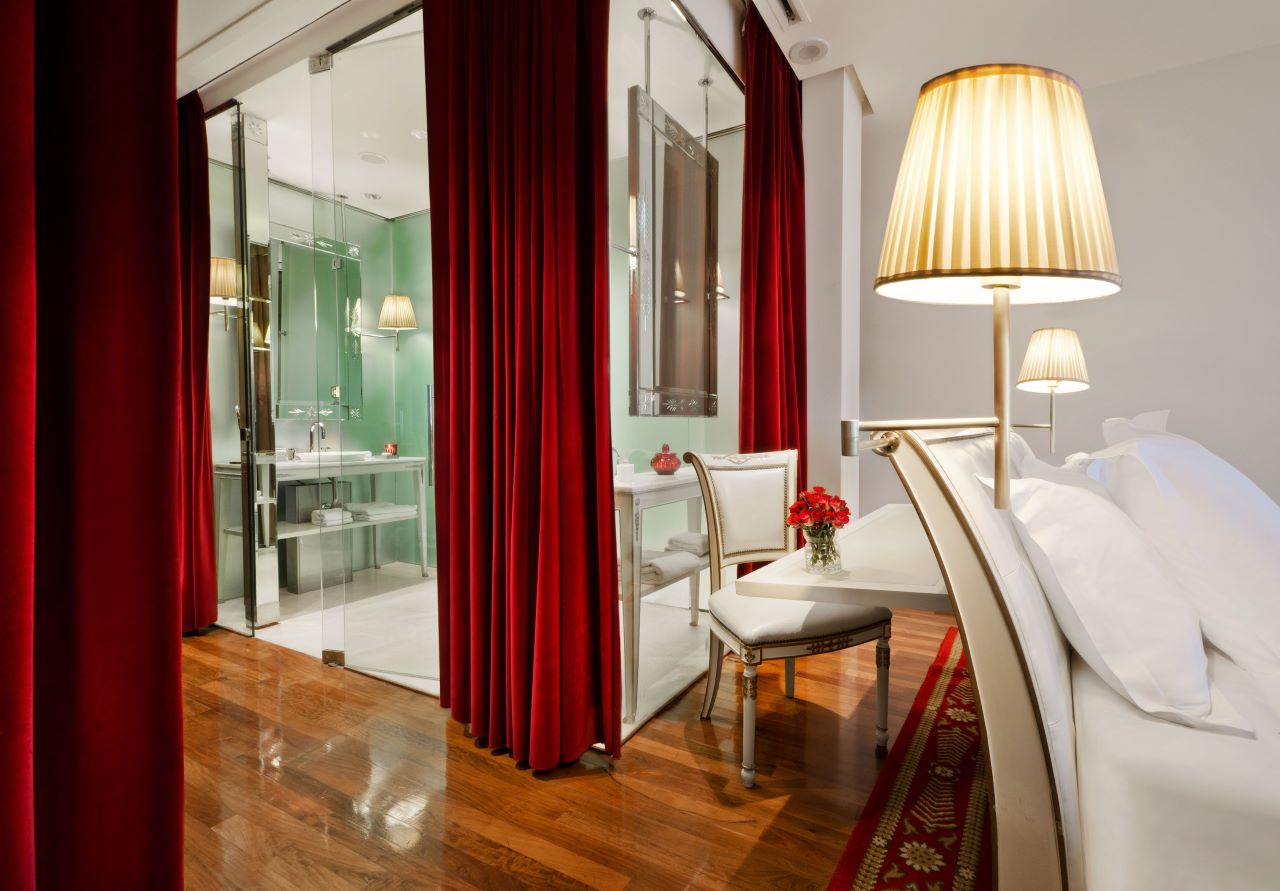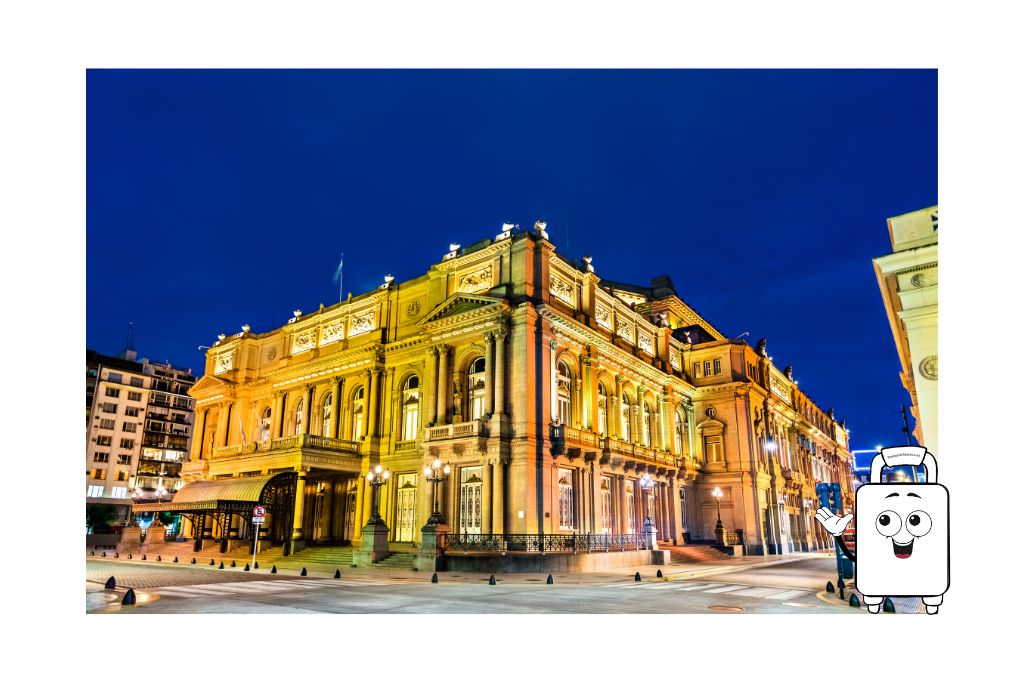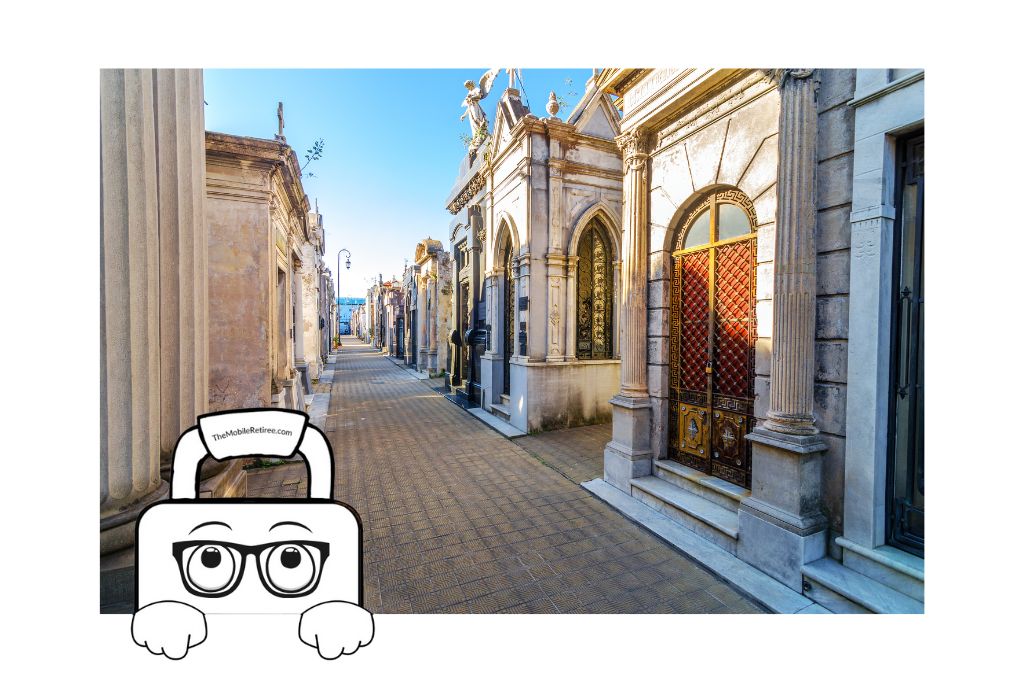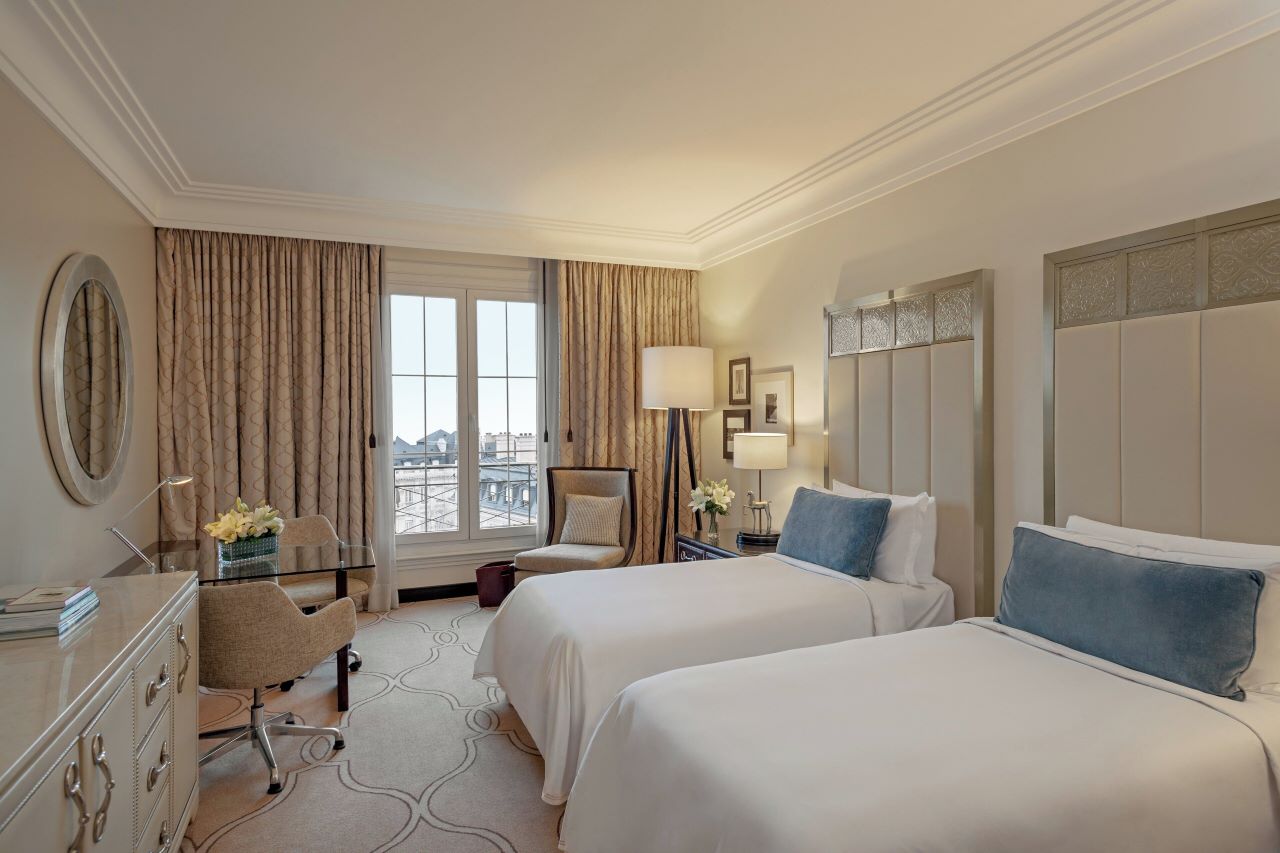Buenos Aires Travel Guide
There is a lot of info contained in this travel guide to Buenos Aires, because whenever we get ready to travel to a new destination, we do a lot of research to ensure we make the most of our time in that destination. We highly suggest that you bookmark this page so you can come back to it when needed.
In this post, we’ll share everything we’ve learned about Buenos Aires – from its wide, tree-lined boulevards to its pulsating tango halls. We’re excited to explore this city that promises a blend of European elegance and Latin American passion, and we want to help other first-time visitors navigate it with confidence.
We’ve compiled what we believe to be the most useful and up-to-date information for fellow first-time visitors.
Quick Links
An Itinerary For Buenos Aires
(Coming Soon!)
Where to Stay
🛏️ Top Hotel Picks for First-Time Visitors
Not sure where to start? These traveler-approved hotels are in the safest, most convenient neighborhoods for your first visit to Buenos Aires. Whether you’re looking for local charm, modern comfort, or easy access to major sights, these picks offer great value and walkable locations — no guesswork required. We’ve chosen options across different budgets, all with excellent reviews and in areas we’d stay in ourselves.
3 Budget-friendly places to stay
3 Mid-range accommodations
3 Luxury Hotels
Unique lodging experience

Quick Fact About Your Hotel Bill:
City tax: Since March 1, 2020, guests who are not permanent residents of Argentina pay a city tax of $1.50 per person, per night. The tax is charged to guests over 12 years old at check out. The tax rate varies by accommodation type, ranging from $0.50 for 3-star hotels to $1.50 for 5-star hotels which may or may not be reflected in published rate.
VAT refund: International visitors can receive a refund of the 21% value added tax (VAT) on accommodation. This refund is automatic and applies to visitors who pay with a foreign credit card or bank transfer from a foreign bank. The refund is available at the time of billing and does not require any additional paperwork. Visitors must provide a valid passport or identification card to prove they are not residents of Argentina.
Neighborhood Breakdown: Where to Stay
Buenos Aires at a Glance
Buenos Aires is Argentina’s HUGE, cosmopolitan capital city. Its center is the Plaza de Mayo, lined with stately 19th-century buildings including Casa Rosada, the iconic, balconied presidential palace. Other major attractions include Teatro Colón, a grand 1908 opera house with nearly 2,500 seats, and the modern MALBA museum, displaying Latin American art.
Best time to visit Buenos Aires
- The best time of year to visit Buenos Aires for warm-weather activities is from late October to mid April.
- Spring (September to November) and Fall (March to May) offer pleasant temperatures and fewer crowds.

Best Things to Do
Attractions and Activities in Buenos Aires

Free things to do in Buenos Aires
Day Trips From Buenos Aires
Getting to the Tigre Delta:
- Bicycle: The Tigre route is one of the favorites of the city’s cyclists, since it is a very beautiful route bordering the river and it is also possible to get on the train at any time. A good alternative is to go by bicycle and return by train. In the city, it is possible to rent bicycles for the day.
- Train: from the Retiro train station – https://www.trenmitre.com.ar/. The trip lasts 54 minutes and you must get off at the last station. You may need to change trains depending on where you start – you must take the TIGRE branch line.
What to Eat & Where
- Asado (Argentine barbecue) – Don Julio, Anchoita, Franca, or Join a Local Family for an Argentine Barbecue
- Empanadas – you’ll find them on just about every street! Or learn to make Empanadas and Alfajores in this Guided Cooking Class
- Dulce de leche
- Mate (traditional Argentine tea) – It is drunk thru a small metal straw that serves as a tea strainer. It is served in a cup & straw is passed around & everyone sips from the same straw. Available everywhere
- Try it all in this #1 ranked Rooftop Barbecue, Wines & Argentinean Flavors experience
Shopping Guide
- Florida Street: Pedestrian shopping street in the city center
- Palermo Soho: Trendy boutiques and designer stores
- San Telmo: Antique shops and the famous Sunday fair
Shopping Guide Quick Fact
Claiming back VAT on shopping: In addition to the VAT Refund mentioned earlier, visitors can also claim back the VAT they pay on Argentina-manufactured products with a value of more than AR$70 pesos bought from participating retailers signed up to the Global Blue Argentina scheme. To take advantage: :
- Shop at retailers that display the Tax Free logo and remember to ask for the tax refund form along with your sales receipt.
- When leaving Argentina, present your receipts, passport and tax refund forms to customs. They will stamp the forms.
- You can receive your refund in cash, by credit card, or by bank cheque.
Getting Around Buenos Aires
Rent A Car?
Renting a car to wandering around Buenos Aires city center isn’t advisable – especially for first time visitors.
- First of all, the traffic levels are very high during rush hours
- Navigating around the city can be challenging due to the many unidirectional streets and the common prohibition of turning left when moving on a two-way road
- Finding a parking spot is a hard task
- Driving can be overall a stressful experience as local drivers don’t generally follow the traffic rules.
Public Transportation
Buenos Aires Underground aka Subte
Run by a privately held company Metrovías S.A., along with the country’s rail lines, the Buenos Aires subway system (SUBTE) serves the area of the city of Buenos Aires. The subway system provides connections with the city’s extensive commuter rail and bus rapid transport networks.
How to get a SUBE Card
- SUBE cards are available at subte stations, at any of the eight Tourist Assistance Centers and at many “kioskos” (corner shops selling confectionary and tobacco) throughout the city. Cards can be charged with credit at all subte stations, national lottery outlets, and at some kioskos with automated terminals. (While searching for info on the SUBE card we discovered that the official site says the Tourist Assistance Centers are closed until further notice but also lists their opening hours – so I guess we’ll see if they are open or closed!)
- Create an account and register your card.
- Load your card through home banking, electronic wallets or ATMs and credit the load in an Automatic Terminal , the new SUBE app , the SUBE Load app and Load on Board in the locations where it is available.
- You can find SUBE charging points here
NOTE: Sadly we are unable to provide links to the apps at this time, well coz… time… and the city’s official website is confusing and filled with broken links.
Buses: Extensive network covering the entire city
There is a new is an integrated public transportation system that encompasses buses, the Metrobus, trains, and subways within the Greater Buenos Aires area (AMBA).
IF your SUBE card is registered (rather than just purchased and used) you’ll receive discounts when you use one or more combinations in public transport (National Jurisdiction buses, CABA buses, trains and subways) in the Metropolitan Area of Buenos Aires (AMBA) within a 2 hour period.
How does this discount work?
- It is available only to those who have their SUBE card registered. (From what information I can find your SUBE card provides the discounts ONLY if you have registered your card. (This info leads us to believe that if you buy and load a SUBE card but don’t register the card, then discounts won’t be applied.)
- The first trip is always at full fare.
- The discount is automatic for registered SUBE cards that have completed the process at a SUBE Automatic Terminal. It is 50% from the second trip onwards and 75% from the third trip onwards.
Taxis and ride-sharing: Widely available
Walking: Many neighborhoods are pedestrian-friendly
Ferries: There are regular ferry services between Buenos Aires and Montevideo and Colonia de Sacramento in Uruguay. The ferry terminals in Buenos Aires are located in Puerto Madero and La Boca. The following companies run services:
Safety Tips and Practical Information
- Emergency numbers: 101 – Police, 100 – Fire Brigade, 107 – Medical Emergencies
- Be cautious with your belongings, especially in crowded areas
- Use official radio taxis or ride-sharing apps
Useful free apps for smartphones and tablets
Taking one for the team here: So far our search for downloadable apps specific to Buenos Aires has lead us either to broken links, outdated apps or apps that locals can use but not visitors. The government website is dated 2019(!) So for now, and to save you the frustration we faced, here’s what we found so far:
BA EcoBici
This mobile application is supposedly for all bicycle users in the city. It maps out bicycles lanes, and shows the locations and availability of city bikes for hire on the city’s free Eco-bici system. However after a tedious registration process in Spanish, although it accepts registration as a tourist, it doesn’t accept the addition of the credit card. Reviews mention Support is non-existent and the chatbot requires a DNI number to proceed.
BA Sube
Samesies as the BA EcoBici. The link provided on the government website for this app doesn’t even work! Found a website to purchase the card and potentially reload it BUT you have to have a BA phone number to register….
BA Cómo llego
The easiest way to find out how to get from A to B in the city, whether on public transport, by car or on foot. Put in the address of where you want to go, and the app will tell you how to get there. BUT the Link to the app is another “Page Not Found”
Money Matters: Budget and Money-Saving Tips
Before going abroad, notify your bank and credit card companies of your travel, and check exchange rates. For information about using cash, debit/credit cards, and ATMs overseas, read the country information page for Argentina.
- Currency: Argentine Peso (ARS)
- Use ATMs in secure locations to withdraw cash
- Many museums offer free entry on certain days – only for residents
Pro Tip: Keep all receipts related to buying pesos! You may need the receipts in order to exchange the pesos to US Dollars when you leave Argentina
FAQs
Is Buenos Aires safe for tourists?
The US State Department currently recommends US citizens exercise normal precautions in Argentina
Do I need to know Spanish to visit Buenos Aires?
As with any other destination we can guarantee you that you will encounter people who understand little to no English – so you will want to be able to at least communicate your basic needs and to be polite
What’s the tipping etiquette in Buenos Aires?
Plan to tip around 10-15% in Argentine restaurants. Tip in Pesos!
Can I use US dollars in Buenos Aires?
The short answer is yes. However there is a LOT more to discuss on this topic. We used a mix of US dollars (to exchange to pesos), credit cards and ATM cards when we were there
Can you drink tap water in Buenos Aires?
Yes, though like anywhere in the world caution should be used in remote rural areas.
Does a U.S. citizen need a Visa to go to Argentina?
Good news first: If you’re an American tourist, you won’t need a visa for visits up to 90 days. Easy, right? But – and this is a big “but” – you’ve got to make sure your passport is in good shape. Argentina requires your passport to be valid for at least six months beyond your departure date… so, if your passport is set to expire soon, get it renewed now. For more info (for US Citizens) visit the US State Department’s website
Getting To Buenos Aires
Since we’re flying into Buenos Aires, that’s what we’ll focus on in this section—how to book your flight, what to expect at the airport, and tips for navigating customs and immigration on arrival.
Buenos Aires is well-connected and easy to reach, with three airports, two bus stations, and a port and cruise terminal. But if you’re looking for a more scenic option, we’ve heard you can book a repositioning cruise to Buenos Aires as well. While we haven’t tried it ourselves (yet!), it’s worth exploring if you want a more leisurely way to get there.
Nearest airport: Ministro Pistarini International Airport (EZE), also known as Ezeiza International Airport
Direct Flights to Buenos Aires from the US leave from
- Atlanta (ATL)
- Dallas-Forth Worth
- Houston (IAH)
- Miami (MIA)
- New York City (JFK)
US Airlines with direct flights to Buenos Aires:
- American Airlines: from Miami (MIA) and New York City (JFK). Seasonal flights from Dallas-Fort Worth (DFW)
- Delta: from Atlanta (ATL) and seasonal flights from New York City (JFK).
- United Airlines: flights from Houston (IAH).
What to Expect at the Airport
We’ve done this a few times (travel internationally) and we’ve been told that there isn’t really anything different to expect when we land in Buenos Aires.
If you haven’t done this before here are a few things to be prepared for to make your arrival smoother;
First, immigration can take a bit of time, especially during peak travel hours. If you’re arriving after a long-haul flight, patience will be key. Make sure you have all your documents ready—passport, proof of onward travel, and any necessary health forms or vaccine proof—because they might ask for them at this stage.
Once you’re through immigration, baggage claim is straightforward, though it can be a little slow depending on the volume of travelers (this is why we are flying with carryon only).
After picking up your luggage, you’ll go through customs, which may involve random bag checks. If you brought any electronic devices, medicines, or valuables, make sure they’re clearly declared to avoid any hiccups.
How to get from Buenos Aires airport to the city centre?
Now, here’s something to note: taxi scams are common at the airport, so resist the urge to hop into the first cab we see outside the terminal. Instead, book a remis (private car service) using the official taxi ticketing counters just outside the doors, or use apps like Uber, Cabify, or the local ride-sharing service BA Taxi.
Here are just a few options to get from the airport to the city center:
Taxis, buses, and private transfers
- Taxis: Taxis are available at all three airports, and you can book an airport taxi at the arrivals area for a fixed fee. You can also hail a street taxi outside terminal “A”, but these don’t have fixed fees. Taxis usually aren’t equipped with a POS system. Thus, they can be paid only in cash. Taxis accepting bank cards should have a sticker on them displaying “MercadoPago”.
- Manuel Tienda León Bus Company: This bus company offers a shuttle bus from Ezeiza airport to downtown Buenos Aires every 30 minutes. It’s an inexpensive option, but can take 1–1.5 hours to get downtown.
- Private hotel transfers: You can book private transfers in advance or on arrival.
- Public bus lines: All three airports are served by public bus lines, but you’ll need a SUBE travel card to use them. The Buenos Aires Tourism board recommends using the app “BA Cómo Llego” to check how to arrive at your destination by public transport but we have yet to find a working page for that app. Bus #8 leaves the airport and takes you to the city center. (More info on the SUBE card is below)
- Uber: You can request an Uber ride at Ezeiza International Airport.
- Taxi Ezeiza: This service offers airport and town transportation, and some say they are easy, safe, and reasonably priced.
- Note: There are no subway or train lines to the city center from the airport!
Cruises
Numerous cruise lines visit Buenos Aires, making the city’s cruise terminal one of the most important in the region. The Quinquela Martín cruise terminal is located in the neighborhood of Retiro, close to the city center and the main tourist attractions. Taxis and the city sightseeing tour bus serve the terminal.
So there you go!
As full-time travelers, we’ve learned that a well-planned trip can make all the difference—and Buenos Aires is no exception.
Remember, we’ll be updating this article with real-time insights and experiences as we live through them, so bookmark this page and check back for fresh tips! If you have any questions or need specific advice before your trip, feel free to drop us a line—we’re happy to help fellow travelers make the most of their Buenos Aires adventure.
Safe travels, and happy exploring!
You May Also Like
- 11 Reasons Why Buenos Aires Is Worth Visiting & Why It’s Not
- Buenos Aires to Santiago by Bus: Why You Should Take the Bus (but only Once!)
- How We Spent Two Months in Buenos Aires on a $5,200 Budget
- Is The Water Palace in Buenos Aires Worth a visit?


